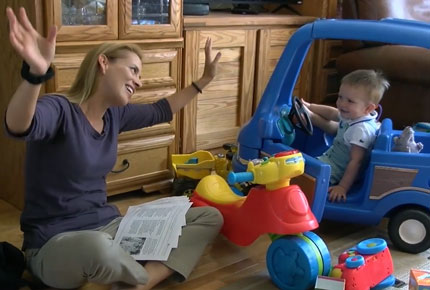Affirming Children's Linguistic Identity
This video has captions. You can turn them on by clicking the CC icon at the bottom of the video.
Download a printable version of this transcript in English or Spanish.
Dr. Elena Sada, Professor of Multicultural and Bilingual Education, Eastern Connecticut State University: A language is not just words; it is part of a child’s identity. Language is associated with their home, their emotional life, and security, and it is and will be an integral part of their culture. The first time children hear, “I love you,” they hear it in a specific language, and that stays with them.
Affirming Children’s Linguistic Identity
Dr. Sada: Language affirmation is identity affirmation. And as children enter the social medium for the first time through school, they should be welcomed by a world that does not place them—their identity, language, race, and culture—as inferior.
My boy was six and had just started school in a suburban, predominantly white town, when he told me in a store, “Mommy, speak to me in English, because they're going to think we're poor.” I was shocked, and I said, “No, sweetie; they are going to think we're smart.” I could not believe it. Why would a Mexican-American six-year-old already have a prejudice against the language or be aware of a prejudice against a language?
We all have biases. And if we don't accept that we have biases, we will not be attentive on how they might reflect in our classroom.
Strategies for Teachers
Dr. Sada: We could spend more time reflecting on our own identity and the identities of our students in connection to the history and the context of different groups. So, in a way, all educators, we need to be historians and sociologists. Once we depict our own identity, and we feel comfortable with it, and we learn to appreciate it, then we can do the same with others’ identities, including those of minority groups.
Teachers can help develop genuine empathy, which is a foundation for justice.
Teacher: Bailey, look what you did to Denise’s face. She was disappointed, and you made her happy.
Dr. Sada: And also, teachers can prepare children for a world that will require self-advocacy—the ability to articulate one’s needs and make informed decisions about the support necessary to meet those needs.
Teacher: What you want to tell Cami?
Child: I don’t like that.
Dr. Sada: So self-advocacy also implies, therefore, being able to speak and act on one’s behalf to correct inequities.
Child: You are out. Back over here. You can come in here if you don’t destroy everything,
Child 2: Okay.
Dr. Sada: I believe that the key is the language that we, as educators, use. So with attention and practice, we can stay away from saying that such and such way is “right” or “wrong.” And we can address the so-called “right way” of saying things by calling it instead the “school way.”
Children tend to match expectations and assumptions. So, we should let them see that we think of their racial and linguistic identity as wonderful.
Home Visitor: Now Mommy’s turn! In Russian.
Mother: Russian song?
Home Visitor: Yes.
Mother: [Sings in Russian.]
© 2020 Center for Early Childhood Education at Eastern Connecticut State University
May be reprinted for educational purposes.



